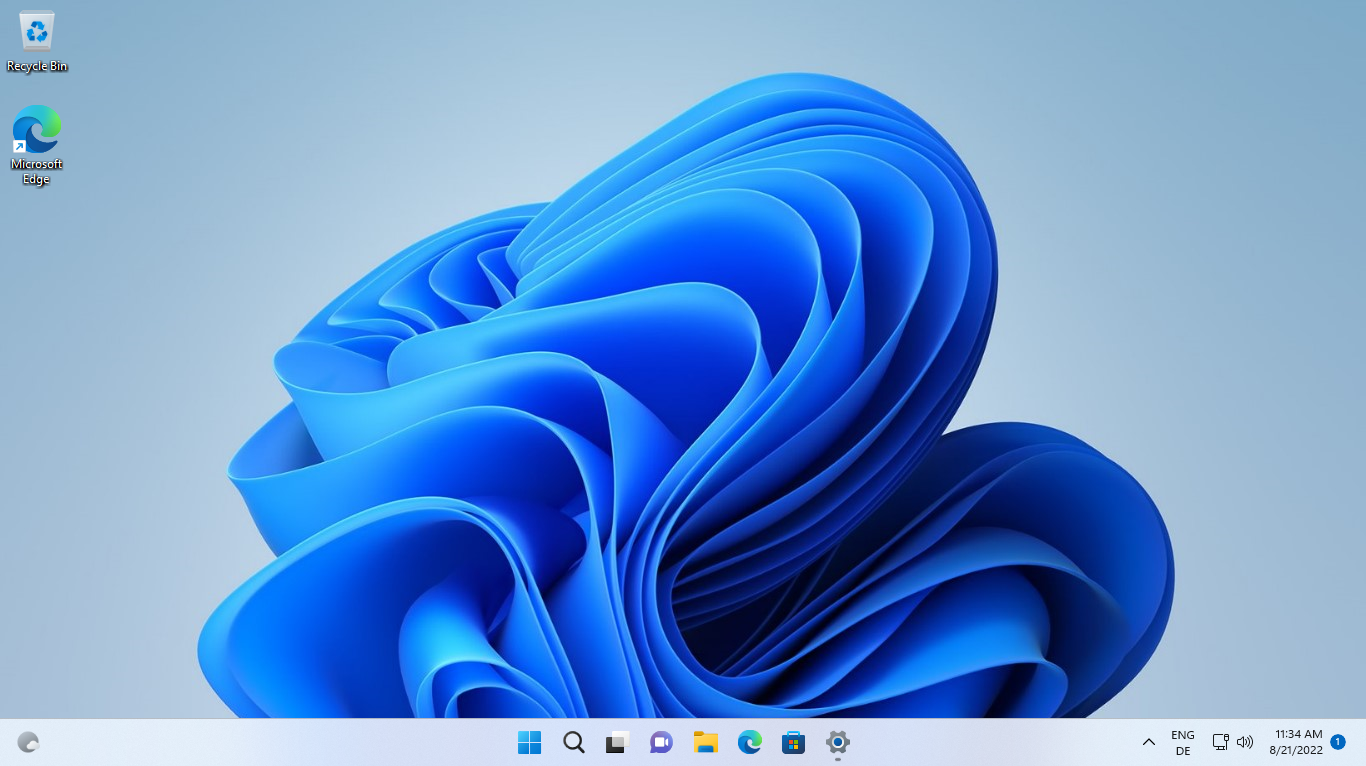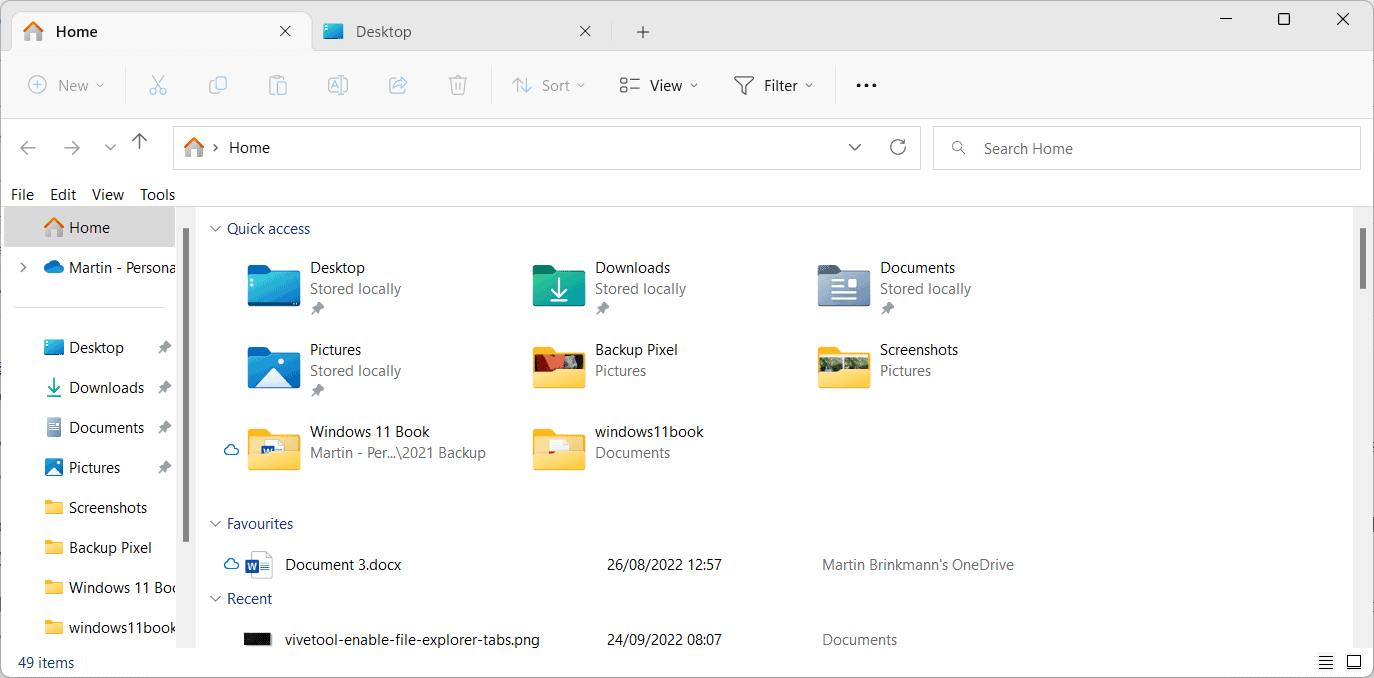Microsoft released the first feature update for Windows 11 earlier this month. The update, which is still rolling out to compatible systems, introduced new features and improvements.
Microsoft improved several key areas, including security, apps, gaming, the Task Manager, and the Start Menu among others. While the Windows 11 2022 Update introduced changes and some new features, it still did not include all the features that Microsoft had planned for it.

We covered the changes extensively, and you may want to check out our Windows 11 News section to get an overview of all the improvements and changes in the Windows 11 2022 Update release.
Microsoft revealed plans to switch development and the release of updates after the release of the first feature update. While the company confirmed plans to stick to the one feature update per year release schedule, it confirmed that it will release smaller feature updates, called Moments, between major feature update releases.
The first of these smaller feature drop releases is scheduled for next month already. It will introduce the highly awaited tabbed browsing system in File Explorer, the suggested actions feature, a changed "open with" interface, and the Taskbar overflow feature.
Tip: all of these features can be enabled on machines that run the Windows 11 2022 Update already.
Recent history of Windows feature updates
To better understand the new system of delivering updates, one must look back at how Microsoft handled updates previously. After Microsoft released Windows 10 in 2015, it quickly switched to a two feature updates per year schedule.
While that sounded good on paper, as it would allow Microsoft to release new features every six months to user devices, releasing two updates per year caused headaches not only for Microsoft but also for system administrators and users.
For Microsoft, it meant that its developers had little time to produce and test features before they would land on user systems. For administrators, it meant installing multiple updates per year, if the systems should run the latest version of Windows 10. Many administrators skipped the first feature update of the year, especially since it was not supported for as long as the second feature update released in the same year.
All of that added to the confusion surrounding Windows updates. Some of the feature updates that Microsoft released in that time did not really introduce anything newsworthy, while others made significant changes to the operating system.
All in all, releases were on schedule but rather chaotic for Microsoft and Windows administrators and users.
One feature update per year and feature drops

Microsoft switched to a one feature update per year schedule when it released Windows 11. The decision took away some of the development and updating pressure, but it limited new features again.
To overcome this, Microsoft started to experiment with feature drops. In the past 12 months, Microsoft released several enhancements as feature drops. The tests gave Microsoft confidence to change updating again in Windows 11.
Feature drops, called Moments, will complement the yearly feature updates for the Windows 11 operating system going forward.
Microsoft confirmed plans to drop at least two Moments updates between the release of the first feature update for Windows 11 and the release of the second feature update, which is expected to be released in late 2023.
The improvements of the first Moments update are known already, but Microsoft has yet to reveal the features that it plans to release in the second Moments update, which is expected in 2023.
One of the main advantages of the approach is that features and improvements do not have such strict deadlines anymore. Developers do not need to rush development or testing to get features ready for inclusion in the yearly feature update for Windows 11. Instead, features are released when they are ready, using one of the Moments updates.
For Windows 11 users, it could have a positive effect on bugs and a reduction in feature releases that looked unready for public release. The new Windows 11 taskbar and Start Menu are just two examples of that.
Is everything great then? Not necessarily. Since features may be introduced with cumulative updates that Microsoft releases on the second Tuesday of each month, as well as the optional updates the month prior to that, it may happen that users may experience unexpected or unwanted changes.
Windows 11 admins and users who follow the news on our site and others are in the know when it comes to these feature drops, but the majority of Windows 11 users may be caught by surprise.
Since the updates are dropped as part of the cumulative updates for Windows 11, it is not as easy as before to postpone them. Previously, Windows 11 administrators could skip a feature update to remain on a specific version and the features that it provided. Now, not installing cumulative updates is not really an option, as it would mean leaving the system open to security vulnerabilities that Microsoft patches in the cumulative updates.
Some of the dropped features may be turned off or ignored, but others can't. While these would eventually find their way on the machine, once the next yearly feature update is released, it would not drop as unexpected as the Moments update might.
Closing Words
The decision to release one feature update per year going forward was a long overdue step. It reduces the strain on administrators and Windows users in the coming years.
Feature drops, or Moments, help introduce features more rapidly under the one feature update per year release system, and they may improve the quality of feature releases next to that.
The coming months will show whether Windows 11 users will like the new approach of dropping new features as part of cumulative updates, or if it will cause more confusion than good.
All in all, it is probably a step in the right direction for Microsoft and the Windows operating system.
Now You: what is your take on the Moments update feature?
Thank you for being a Ghacks reader. The post An analysis of Microsoft's new approach to Windows 11 updates appeared first on gHacks Technology News.
0 Commentaires